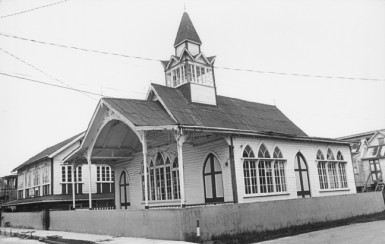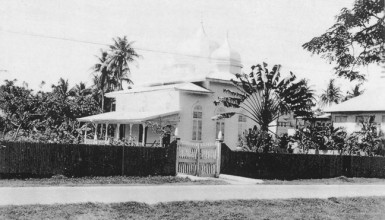By Basdeo Mangru
One of the enduring myths of the Indians in Guyana, and indeed throughout the Caribbean, is that they are a docile, passive people reluctant or incapable of initiating action to disrupt the status quo. While such notions may apply to some Indo-Guyanese who form part of the petit bourgeoisie, the militancy of Indian workers on the sugar estates belied this. From their arrival in the Caribbean in May 1838 through indenture and the post-indenture periods, Indians had demonstrated time and again that they could respond resolutely to pressures. The British Raj had realized this only too well during the 1857 Sepoy Mutiny, the terrorist movement and Gandhi’s various civil disobedience campaigns.

The early batches of Indian indentured workers were referred to as simple, docile intelligent, tractable, industrious workers. In the immediate post-emancipation period, workers with such traits were highly valued by colonial sugar planters and were considered indispensable to the prosperity of the sugar industry.
Moreover, for the first 30 years Indians chose accommodation, rather than resistance, as a strategy for survival on the estates. They chose this method because of the alien environment, their unfamiliarity with the type of work required of them, the regulated estate life and their inability to subdue nostalgia. Therefore, their overwhelming desire was to survive, to accumulate some money and return to India to purchase a piece of land or liquidate accumulated debts.
However, from the early 1870s this image of docility and passivity of Indian workers began to be seriously questioned, and by the beginning of the 20th century was completely shattered. The new stereotypes – revengeful, vindictive, suicidal, mendacious, cunning, excitable, clannish – replaced the former conceptions of Indians. These new labels were applied as resistance asserted itself on the estates.
Indians resisted the planters’ efforts to emasculate them in a variety of ways. One was desertion from the estates despite brutal treatment on apprehension and the heavy penalty entailed. Indians deserted because of low wages and semi-servile conditions. Another was leaving the estates in groups to air their grievances at the Immigration Department. The most persistent form of resistance was open defiance in the form of strikes and riots, and in the period 1886-1950 nearly 1000 strikes occurred in the Guyanese sugar belt. During the period 54 sugar workers were gunned down, with scores wounded or scarred for life.
Most of the strikes were small-scale and spontaneous and were designed to remedy specific grievances on individual estates. Workers’ anger was directed largely at estate personnel, and the hackia stick was often used. Indian drivers and white overseers who victimized and brutalized Indians became targets of violent assaults. To prevent managers from summoning the police, telephone wires were cut on several occasions. Consequently, managers had to barricade their homes against striking Indians.

Indians also used their religion as a form of protection, to preserve their identity and to prevent the system from reducing them to mere puppets. Thus they used the annual Tadjah ritual as a means of asserting their power, for on Tadjah day any European who failed to show some form of reverence on approaching the Tadjah was liable to be assaulted. There was now a reversal of roles and Indians in their inebriated state were prepared to demonstrate their power irrespective of the consequences.
Despite these various forms of overt resistance, the planters continued to harp on the docility image because it would be contrary to British imperial policy to import troublemakers. In time the docility image came to acquire an element of truth and is still prevalent today. But the fact that during the riots the press constantly called for an efficient, mobile, military to quell indentured Indians tended to destroy the docility image.
Although they were powerless on estates, Indian workers displayed extraordinary temerity against the bullets, batons and bayonets of the police. Many times they were ‘knocked down’ but they were never ‘knocked out.’





